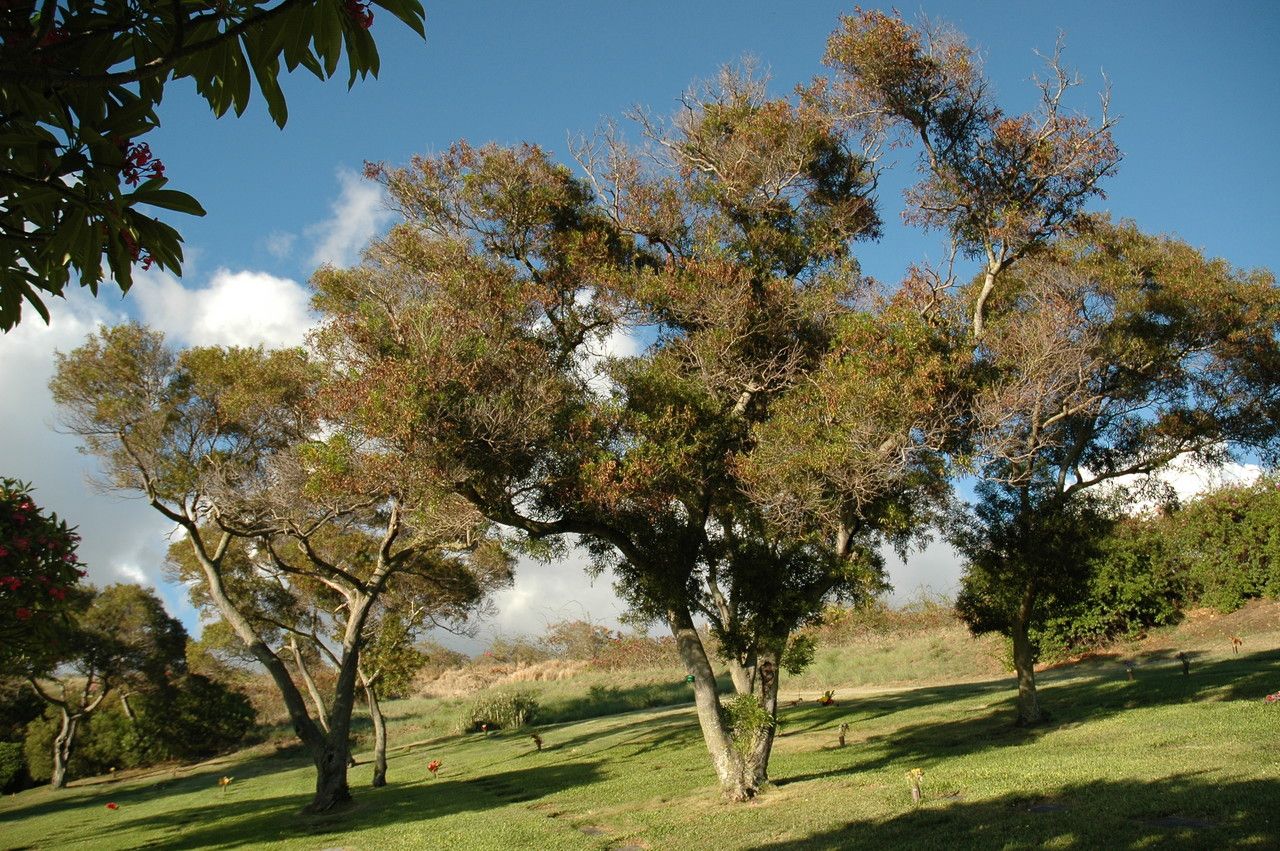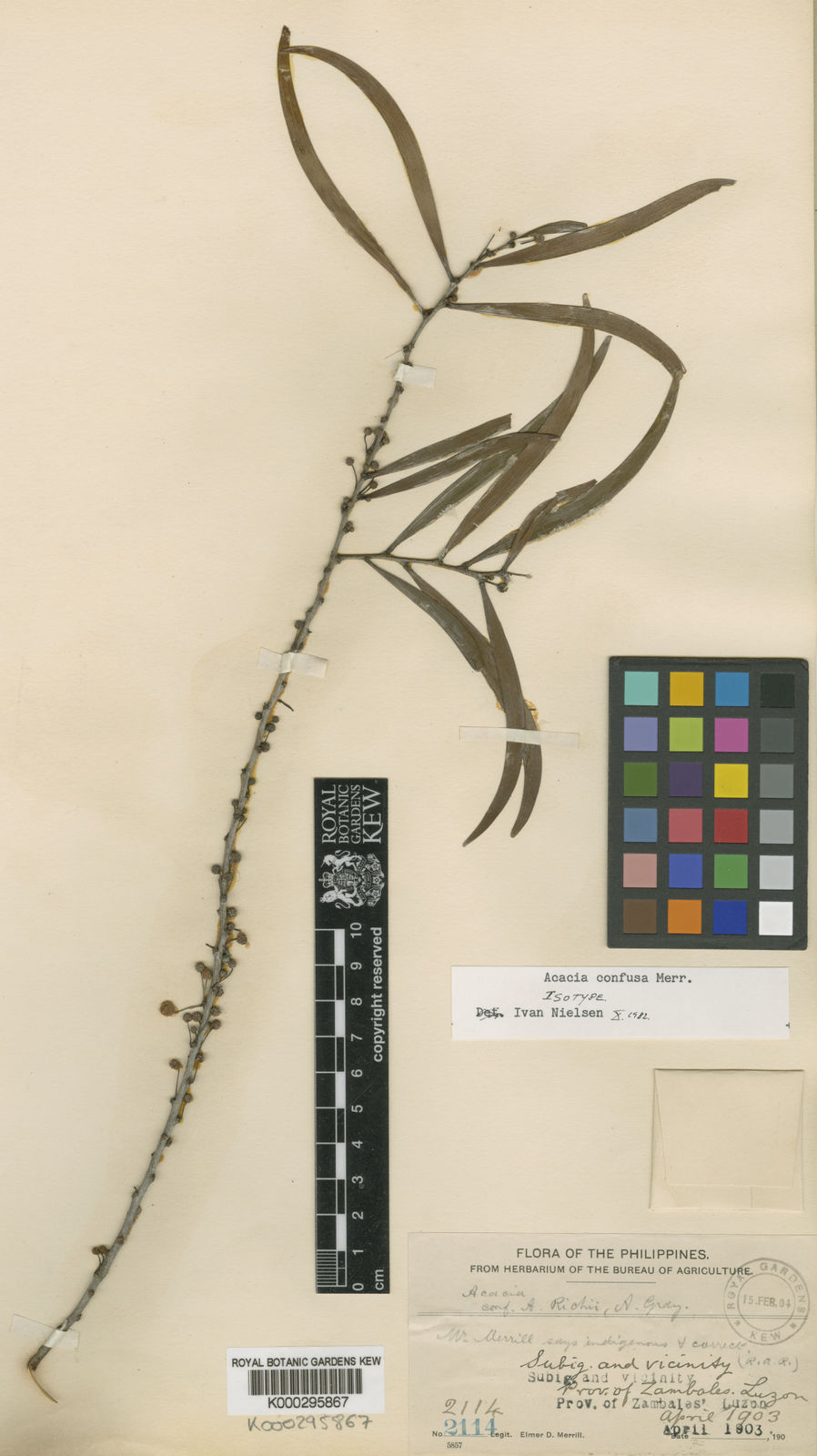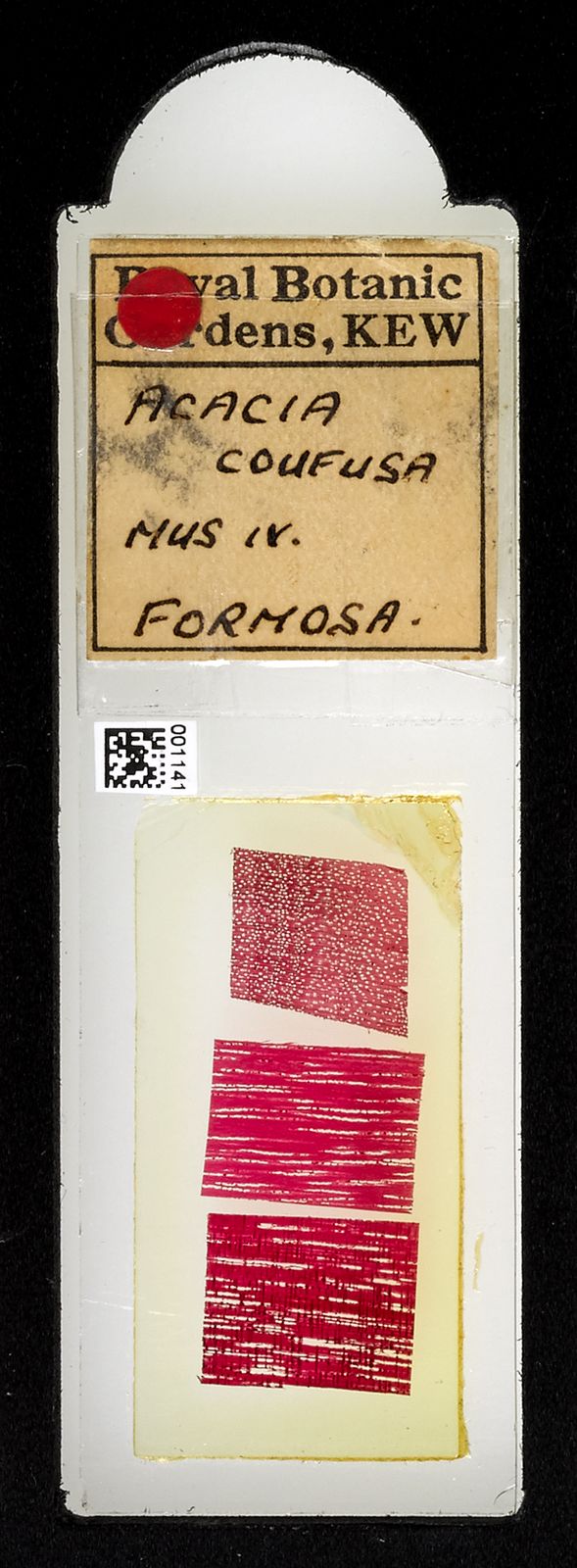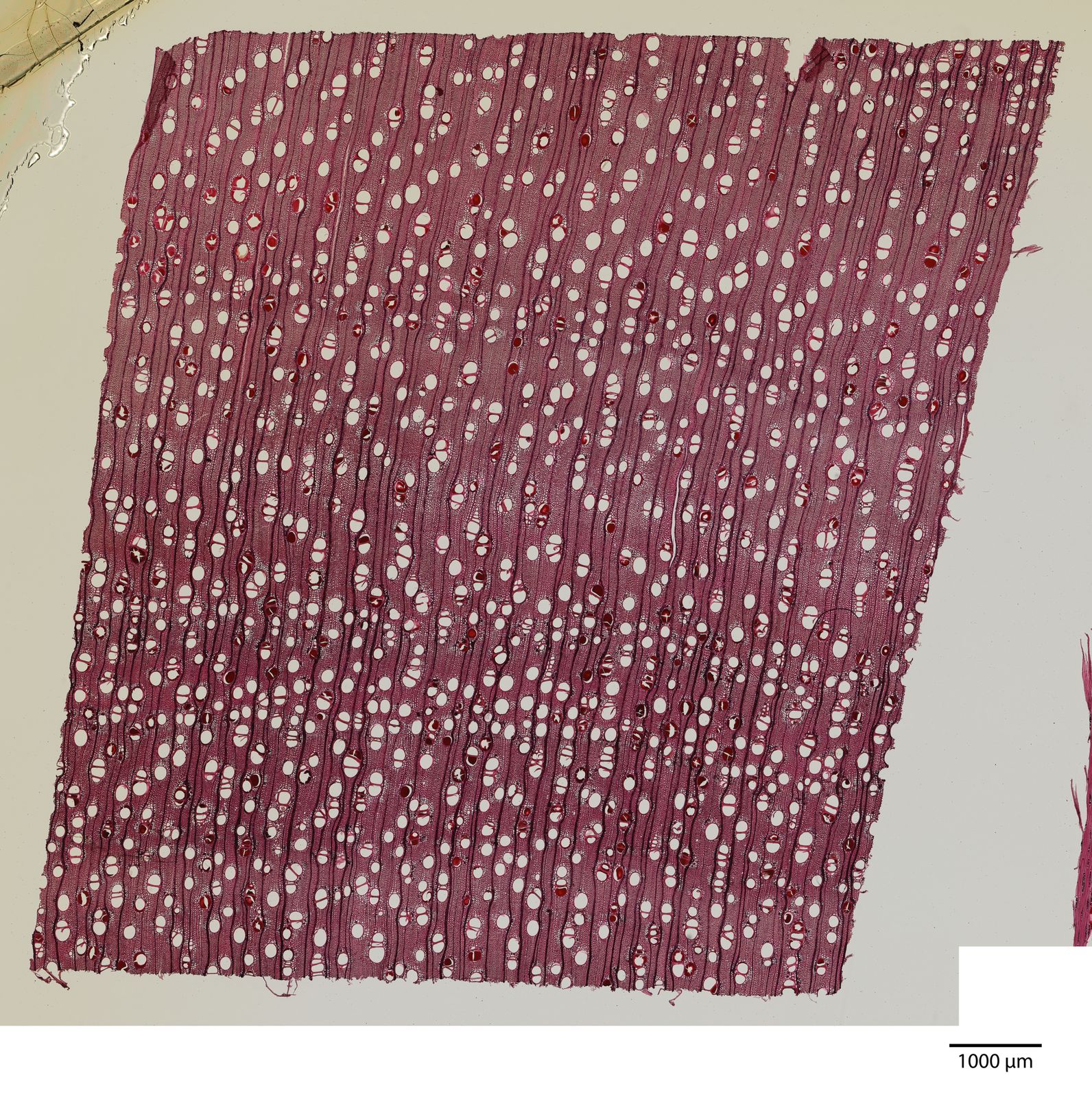Formosa Acacia
acacia confusa
Also known as: ["Small Philippine Acacia","Formosa Wattle"]
Overview
A small to medium-sized tree native to Asia, known for its hardy nature and nitrogen-fixing capabilities.
Benefits & Perks
["drought tolerant","shade tolerant","wildlife attractant (bees, butterflies, birds)"]
Botanical Classification
| Phylum: | Magnoliophyta |
| Class: | Magnoliopsida |
| Order: | Fabales |
| Family: | Fabaceae |
| Genus: | Acacia |
| Botanical Name: | Acacia confusa |
Plant Characteristics
Basic Information
- Category: Trees
- Suitable Location: outdoor garden in warm, sunny areas
- Suitable For:
- Is Weed: No
- Allergenicity: low
Environmental Needs
- Climate: {"temperatureRange":"15–35°C"}
- Hardiness: {"zones":"9–11"}
- Misting: rarely required, only if ambient humidity is very low
- Drainage: Fast-draining to prevent waterlogging.
- Soil Type: Well-draining, slightly acidic soil with organic matter and sand or perlite.
Maintenance Level
- Maintenance Level: moderate
- Toughness Level: high
- Pruning Frequency: Annually in late winter or early spring before new growth begins.
- Pruning Intensity: Moderate. Remove up to one-third of old growth to rejuvenate the plant.
Care Details
Ideal Sunlight Coverage:
Full sun (6–8 hours of direct sunlight daily). Tolerates partial shade but may become leggy.
Sunlight Tolerance Tips:
Acclimate gradually to intense sunlight to prevent scorching. Indoors, place near a south-facing window; outdoors, ensure unobstructed light.
Care Requirements
Care Difficulty
easymoderate
Sunlight
full sun
Rotate plant for even growth; use shade cloth in extreme heat; avoid sudden light changes.
Watering
every 7–10 days during active growth, less frequently in winter
Water thoroughly until runoff, allow soil to dry between waterings, and avoid overwatering to prevent root rot.
Soil
well-drained, sandy loam with moderate fertility
pH: 5.5–6.5 (slightly acidic).
Use raised beds for drainage; avoid heavy clay soils; topdress with mulch.
Temperature
Thrives in 65–85°F (18–29°C). Tolerates mild frosts but prefers warm, tropical conditions.
Avoid drafts; maintain stable temperatures; protect from sudden drops.
Fertilizing
every 2–3 months during growing season with balanced fertilizer
Avoid over-fertilizing; fertilize only during active growth; flush soil occasionally to prevent salt buildup.
Propagation
Methods
Stem cuttings or seed. Stem cuttings are more reliable for home growers.
Step-by-Step Propagation Guide
- Take cutting, apply hormone, plant in medium, maintain humidity, wait for roots.
Best Time: Spring or early summer when the plant is actively growing.
Environment
High humidity (70–80%), warm temperatures (75–85°F), and indirect light.
Medium
Well-draining mix of perlite, sand, and peat moss.
Hormone
Rooting hormone is recommended for faster and more reliable rooting.
Timeline
Roots develop in 4–8 weeks; establish in new pot after 3–6 months.
Tools Needed
Pruners, rooting hormone, pots, misting spray bottle, plastic wrap.
Quick Tips
Use healthy, non-flowering stems; keep soil consistently moist; provide bottom heat if possible.
Pruning & Repotting
Pruning Guide
Method
Selective thinning and heading back to maintain structure and encourage branching.
Pruning Plan
Shape the plant, remove dead or diseased wood, and encourage bushier growth.
Tools
Pruning shears, loppers, gloves, disinfectant.
Checklist
Disinfect tools, prune at the right time, make clean cuts, remove debris.
Repotting Guide
Best Season
Early spring before active growth starts.
Pot Size
Increase pot size by 2–3 inches in diameter.
Method
Remove plant, trim roots if needed, use fresh soil mix, ensure good drainage, water lightly.
Suggestions
Repot every 2–3 years or when roots fill the container. Acacia confusa prefers slightly root-bound conditions.
Checklist
Check root boundness, prepare new pot, use fresh soil, water after repotting, monitor for stress.
Advanced Care Tips
Watering Mastery
Watering Checklist
Check soil moisture, water deeply, ensure drainage, avoid wetting foliage.
How to Apply Water Properly
Water at the base of the plant, ensuring moisture reaches the root zone. Water early in the morning to minimize evaporation and allow foliage to dry.
Watering Schedule Tips
Water deeply once every 7–10 days during active growth, reducing frequency to every 2–3 weeks in winter. Adjust based on rainfall and soil dryness.
Soil Improvement
Add perlite or coarse sand for drainage; incorporate compost for fertility; ensure aeration with organic matter.
Temperature Stress Management
Signs of Temperature Issues
Chlorosis, leaf drop, stunted growth, or browning leaf edges.
Cold Stress
Slows growth, may cause leaf drop or dieback in prolonged cold.
Solution: Protect from frost with frost cloth; move indoors in freezing temperatures; ensure good air circulation.
Hot Stress
Wilting, leaf scorch, or reduced flowering in extreme heat.
Solution: Provide afternoon shade; increase watering; use mulch to retain soil moisture.
Fertilizing Guide
Fertilizing Checklist
Check season, use correct dilution, apply to soil, avoid foliage contact.
Fertilizing Method
Use balanced, slow-release fertilizer in spring and summer. Dilute liquid fertilizer to half-strength monthly during growth periods.
Common Problems & Solutions
Toxicity Warning
Cats
Slightly ToxicCats may experience mild toxicity if they ingest parts of Acacia confusa, particularly the seeds and bark. The plant can cause gastrointestinal upset and other mild systemic effects, though it is not considered highly toxic to felines.
⚠️ Symptoms:
🌿 Toxic Parts:
⚡ Toxic If:
if eaten
Dogs
Slightly ToxicIn dogs, ingestion of Acacia confusa seeds and bark can lead to mild gastrointestinal upset and other systemic effects. While not highly toxic, the plant can cause discomfort and should be avoided to prevent adverse reactions.
⚠️ Symptoms:
🌿 Toxic Parts:
⚡ Toxic If:
if eaten
Humans
Slightly ToxicAcacia confusa contains toxic compounds, primarily in its seeds and bark, which can cause mild to moderate gastrointestinal distress and other systemic effects upon ingestion. The plant's toxicity is not severe but can lead to discomfort and adverse reactions in humans.
⚠️ Symptoms:
🌿 Toxic Parts:
⚡ Toxic If:
if eaten
Frequently Asked Questions
Q: Is Acacia confusa toxic to pets?
A: It is mildly toxic to dogs and cats.
Q: Does Acacia confusa attract wildlife?
A: Yes, it attracts bees, butterflies, and birds.
Q: How easy is it to care for Acacia confusa?
A: It is easy to care for, requiring moderate maintenance.
Quick Reference
| Family: | Fabaceae |
| Care: | easy |
| Light: | full sun |
| Water: | every 7–10 days during activ |
Get Expert Care Tips
Download the Plantious app for personalized care reminders and plant identification!
Google Play App Store








